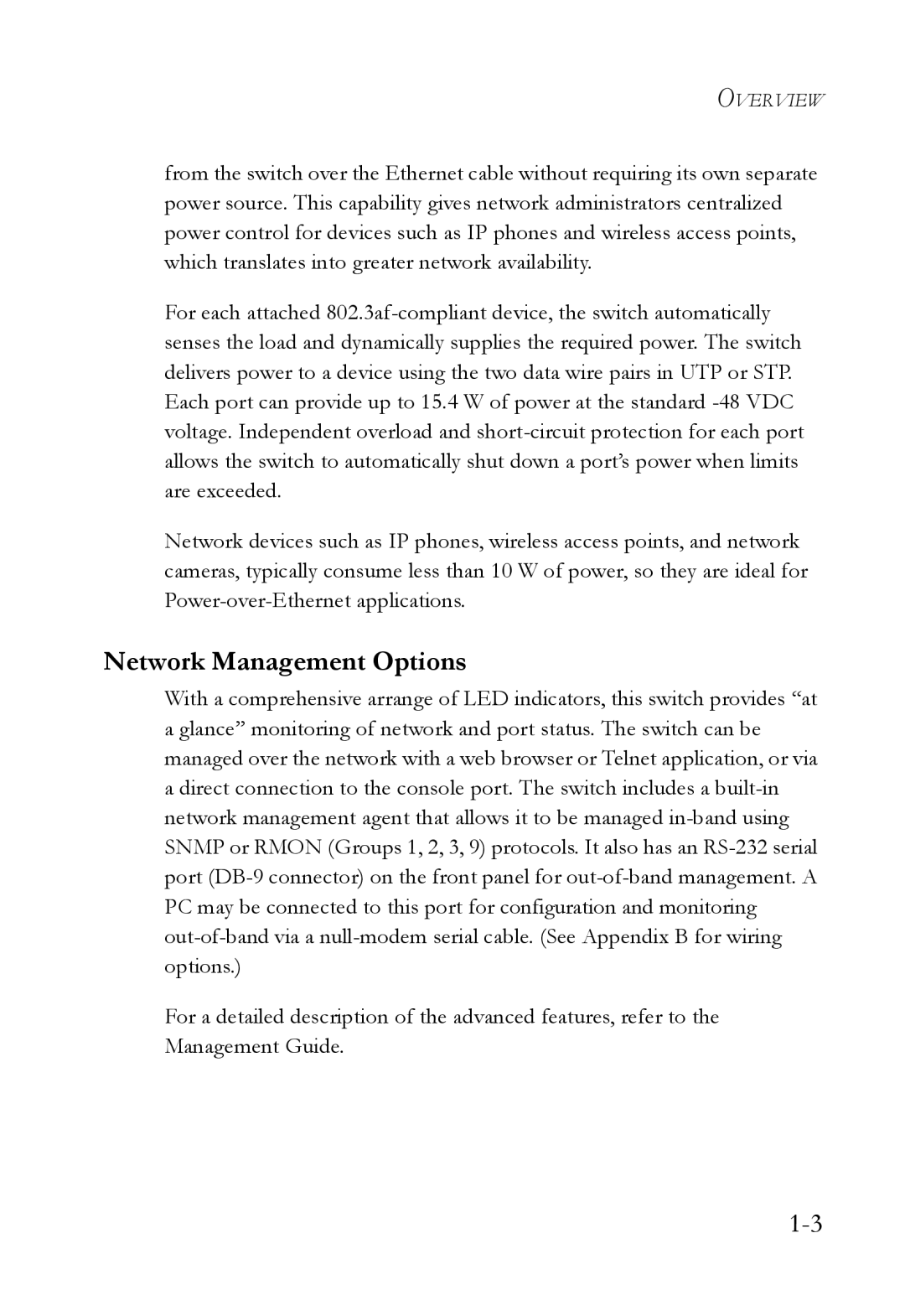OVERVIEW
from the switch over the Ethernet cable without requiring its own separate power source. This capability gives network administrators centralized power control for devices such as IP phones and wireless access points, which translates into greater network availability.
For each attached
Network devices such as IP phones, wireless access points, and network cameras, typically consume less than 10 W of power, so they are ideal for
Network Management Options
With a comprehensive arrange of LED indicators, this switch provides “at a glance” monitoring of network and port status. The switch can be managed over the network with a web browser or Telnet application, or via a direct connection to the console port. The switch includes a
For a detailed description of the advanced features, refer to the Management Guide.
